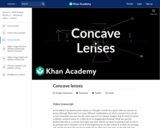
An introduction to Concave Lenses. Created by Sal Khan.
- Subject:
- Physical Science
- Physics
- Material Type:
- Lesson
- Provider:
- Khan Academy
- Provider Set:
- Khan Academy
- Author:
- Sal Khan
- Date Added:
- 12/09/2010

An introduction to Concave Lenses. Created by Sal Khan.
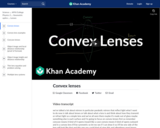
An introduction to Convex Lenses. Created by Sal Khan.

This is a lesson about using radar to search for water on the Moon. Learners will use images to search for water on the moon. Additionally they will learn how Mini-RF can identify surface features that are permanently shadowed, or lack any visible evidence of surface morphology.
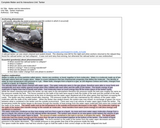
This resource is a phenomenon-based adaption to the Smithsonian's STCMS Matter and Its Interactions kit. The anchoring phenomenon event features a railroad tanker that collapses due to the phase changes of water that was used to clean it. Students will investigate what causes phase changes, energy transfer, thermal energy, the law of conservation of mass, and atoms and molecules throughout the three week unit.

Students determine the ability of various lenses and mirrors to gather light in order to compare and calculate their light gathering power. This activity is part of Unit 3 in the Space Based Astronomy guide that contains background information, worksheets, assessments, extensions, and standards.

Students work alone or in groups to draw "cross plots" and make connections between ocean biology, chemistry, geology, and physics. This simple graphical tool helps students understand the interdisciplinary nature of oceanography. It also enables students to apply knowledge to a local area, an ocean, the global ocean, or a topic, such as ocean acidification.
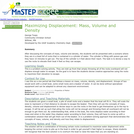
This is an indoor lab that uses a boat simulation to demonstrate the concepts of mass, volume and density, and their relationship to displacement. It is a problem solving activity that encourages student creativity resulting in a variety of valid solutions.
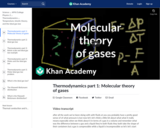
Intuition of how gases generate pressure in a container and why pressure x volume is proportional to the combined kinetic energy of the molecules in the volume. Created by Sal Khan.

In this video David solves a few exmaple problems involving concave and convex mirrors using the mirror equation and magnification equation.

In this video, David explains what a photon is and how to determine the energy of a photon. Created by David SantoPietro.
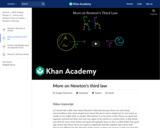
David explains some of the common misconceptions in dealing with Newton's Third Law. He also shows how to correctly and reliably identify Third Law force pairs. Created by David SantoPietro.

In the story Wings, Ikarus Jackson is shunned and tormented by his peers, as well as community members because of his unique physical appearance.

Students will explore gender expression, gender identity, sexual orientation, and gender stereotypes. Students will discuss such topics as a safe space, demonstrating respect, and making assumptions based on expression
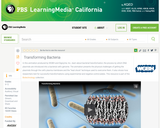
This animation produced by WGBH and Digizyme, Inc. demonstrates the experimental technique used to introduce DNA plasmids inside bacterial cells, a process called bacterial transformation.

Students learn about the physical force of linear momentum movement in a straight line by investigating collisions. They learn an equation that engineers use to describe momentum. Students also investigate the psychological phenomenon of momentum; they see how the "big mo" of the bandwagon effect contributes to the development of fads and manias, and how modern technology and mass media accelerate and intensify the effect.
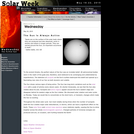
This is a reading associated with activities during Solar Week, a twice-yearly event in March and October during which classrooms are able to interact with scientists studying the Sun. Outside of Solar Week, information, activities, and resources are archived and available online at any time. Learners will read about solar activity, such as sunspots and coronal mass ejections, and the solar cycle. Links to other online resources are included. This activity is scheduled to occur during Wednesday of Solar Week.
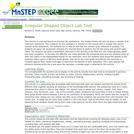
This activity lends itself well to the review and repetition of previous topics and skills. The multi-faceted learning (and display of learning) is an excellent manner of getting the students to think about what they are doing and how they are answering.

An introduction to magnetism. Created by Sal Khan.
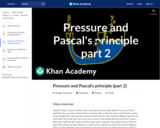
Sal finishes the calculation of work to determine the mechanical advantage in a U-shaped tube. He also explains pressure and Pascal's Principle. Created by Sal Khan.

Using our understanding of fluid pressure to figure out the height of a column of mercury. Created by Sal Khan.